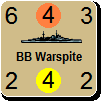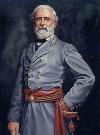ORIGINAL: Jim D Burns
The main drawback is the generic nature of the title. It tried to do everything and in so doing wasn’t able to focus on specific issues for different eras and theaters of operation, so most scenarios are chalk full of special house rules and work arounds in text file format that you need to read up on offline before you play them.
TOAW III was designed as an operational level engine to model land campaigns. Some designers have designed strategic and tactical scenarios and/or scenarios that require substantial naval game play. Designers have always pushed the TOAW III engine and have to introduce compromises because of the scenario design. This is not a fault of the TOAW III engine, that it can be done at all (albeit with house rules) is a testament to the quality of the engine.
There were also some engine limitations due to computer memory limitations in the era the game was programmed in, so for instance the most units that can be rebuilt and return to map as reinforcements in a single turn are 9 (a single hexes stacking limit) due to the fact the engine wasn’t capable of allowing more than 1 reinforcement location to be designated, so big east front scenarios that use smaller units scales suffer from issues like that.
The 9 unit stacking limit is a non-issue of the TOAW III engine. If a scenario designer chooses to create a Barbarossa scale map at 2.5km with company size units then yes it becomes a problem. But this is a fault of the scenario design not the engine.
TOAW III allows for multiple reinforcement locations.
... but I’d expect many of the older issues to still be present.
TOAW III certainly has some older issues. The air model is simplistic though functional. And currently, the naval model is all but non-existent (although being worked on for the next patch.)
TOAW III is not perfect but many of the problems complained about are due to poor scenario design rather than a fault with the engine.
Best wishes,
Steve
I love the smell of TOAW in the morning...














